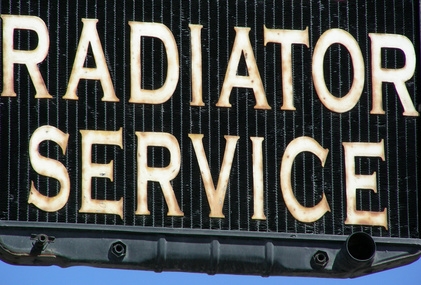
Overheating can be a serious problem for any car and cause extensive and expensive damage when not fixed immediately. Engine blocks and cylinder heads are made of aluminum on almost every car, resulting in much less heat tolerance than older cars whose parts were made of steel. Overheating can cause the head gasket to blow out or the head to extend beyond repair. If that happens, the car will need a new engine to run. It is imperative to shut off overheating engines at once and find the cause of the problem.
Pull over into the nearest safe spot when the water temperature gauge shows that your car is overheating. Shut off the engine and open the hood, let as much heat escape as possible. Turn your ignition on so your heating system works. Turn on the heat and the blower at full blast for a few minutes in order to subtract more heat from the engine system. Do not shower the engine with cold water, let it cool off gradually. Depending on what climate zone you´re in, that process could take well over an hour.
Check the engine coolant level in the radiator tank. If that level is low, open cap and fill tank with engine coolant. If you do not have any engine coolant with you, you can use cold water as well. Start the engine after it cooled off in order to let the coolant or water circulate into the radiator system. Keep the engine running in "neutral". Fill more coolant or water into the tank until the level reaches the mark "hot". Close cap and watch the temperature gauge for a few minutes while the engine idles. If the engine does not overheat again, you can safely drive on. If you used water to fill the tank, you should drive to the nearest service station and replace some of the water in your radiator with engine coolant.
Watch the temperature gauge after you started the cooled-off engine with the freshly added coolant or water. It is okay if the gauge goes over the safe limit mark for a few seconds, then bounces back into safe temperature regions. That means your thermostat is working properly. However, if the engine overheats again for more than 30 seconds, shut it off. Most likely, you will need a new thermostat, or in some very rare instances, a new hose. Do not attempt to drive an overheated car to the nearest service station for a thermostat replacement, which is an inexpensive and quick repair job which just about any mechanic can do. Have the car towed.